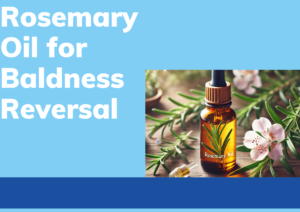
In the constant quest for a youthful and radiant complexion, skincare enthusiasts are bombarded with a seemingly endless array of ingredients. Among these contenders, vitamin C stands out as a powerhouse, revered for its antioxidant and brightening properties. But traditional vitamin C (ascorbic acid) comes with a hitch: it’s notoriously unstable, losing its potency quickly when exposed to light and air.
Enter 3-O-Ethyl Ascorbic Acid, a next-generation vitamin C derivative designed to overcome these limitations. This innovative ingredient is rapidly gaining popularity in the skincare world, but is it all hype, or can it truly deliver accurate results? Let’s delve deeper and unlock the power of 3-O-Ethyl Ascorbic Acid.
What is 3-O-Ethyl Ascorbic Acid?
3-O-ethyl Ascorbic Acid (often called Ethyl Ascorbic Acid) is a stable, oil-soluble derivative of vitamin C. It’s created by attaching an ethyl group to the ascorbic acid molecule. This modification not only enhances stability but also improves penetration into the skin, making it a more user-friendly option compared to traditional vitamin C.
Benefits of 3-O-Ethyl Ascorbic Acid for Your Skin
3-O-Ethyl Ascorbic Acid boasts a range of potential benefits for your skin thanks to its unique properties:
- Brightening and Anti-Pigmentation: One of the most sought-after effects of vitamin C is its ability to brighten the skin and reduce hyperpigmentation. Studies suggest that 3-O-Ethyl Ascorbic Acid can effectively target uneven skin tone and dark spots, promoting a more radiant and even complexion.
- Antioxidant Powerhouse: Free radicals wreak havoc on our skin, accelerating the aging process. 3-O-ethyl Ascorbic Acid acts as a potent antioxidant, neutralizing free radicals and protecting the skin from damage caused by environmental aggressors like UV rays.
- Collagen Boost: Collagen is the scaffolding that keeps our skin plump and youthful. 3-O-ethyl Ascorbic Acid may stimulate collagen production, leading to firmer, smoother skin with reduced wrinkles and fine lines.
- Gentle on Sensitive Skin: Traditional vitamin C can sometimes be irritating, especially for those with sensitive skin. 3-O-ethyl Ascorbic Acid is generally considered more gentle, making it a viable option for those who haven’t been able to tolerate other forms of vitamin C.
Side Effects of 3-O-Ethyl Ascorbic Acid
While generally well-tolerated, some people may experience mild side effects like tingling, burning, or redness when using 3-O-Ethyl Ascorbic Acid. These effects are usually temporary and can be minimized by starting with a lower concentration and gradually increasing it as your skin adjusts. As with any new product, it’s always best to do a patch test on a small area of your arm before applying it to your face.
Here are some additional points to consider regarding side effects:
- Sun Sensitivity: Even though 3-O-Ethyl Ascorbic Acid offers some inherent photoprotection due to its antioxidant properties, it’s not a substitute for sunscreen. Consistent daily use of SPF 30 or higher is crucial to safeguard your skin from sun damage.
- Potential Interactions: If you’re using other topical medications or have any underlying skin conditions, consult your dermatologist before incorporating 3-O-Ethyl Ascorbic Acid into your routine.
How to Use 3-O-Ethyl Ascorbic Acid for Optimal Results
To reap the benefits of 3-O-Ethyl Ascorbic Acid, follow these tips:
- Choose the Right Concentration: Start with a lower concentration (around 2%) and increase it gradually as your skin tolerates it. Higher concentrations (up to 5%) may offer more potent results but also carry a higher risk of irritation.
- Incorporate it into Your Routine: Apply 3-O-Ethyl Ascorbic Acid to clean dry skin in the morning. Since it’s more stable than traditional vitamin C, it can be used before or after your moisturizer.
- Store it Properly: To maintain its potency, store your 3-O-Ethyl Ascorbic Acid product in a cool, dark place. Look for packaging that minimizes exposure to air and light, and consider using products with airtight pumps.
- Be Patient: Like most skincare ingredients, consistency is critical. It may take several weeks to see noticeable results with 3-O-Ethyl Ascorbic Acid.
FAQs about 3-O-Ethyl Ascorbic Acid (continued)
Q: Can I use 3-O-Ethyl Ascorbic Acid if I am pregnant or breastfeeding?
A: While 3-O-EA is generally considered safe for topical use, it’s always best to consult your doctor before introducing any new skincare product during pregnancy or breastfeeding.
Q: Are there any other things to consider when using 3-O-Ethyl Ascorbic Acid?
A: Remember, consistency is key! To see noticeable results, you must regularly use 3-O-EA for several weeks. Be patient and allow your skin time to adjust. Additionally, a healthy diet rich in antioxidants can further support your skin’s health and complement the benefits of 3-O-EA.
Q: Can I mix 3-O-Ethyl Ascorbic Acid with other skincare ingredients?
A: While 3-O-Ethyl Ascorbic Acid is generally well-behaved, it’s best to avoid mixing it with strong acids (like AHAs) or strong alkaline ingredients. It can also potentially interact with Benzoyl Peroxide. Consulting a skincare guide or dermatologist can help you determine compatible ingredients for layering.
Q: Is 3-O-Ethyl Ascorbic Acid suitable for all skin types?
A: Due to its gentle nature, 3-O-Ethyl Ascorbic Acid is a good option for most skin types, even those with sensitivity. However, it’s always recommended to do a patch test before applying it to your entire face.
Q: Is there an expiration date for 3-O-Ethyl Ascorbic Acid products?
A: Yes, most 3-O-Ethyl Ascorbic Acid products will have an expiration date listed on the packaging. Since it’s a more stable form of vitamin C, it may have a longer shelf life compared to traditional vitamin C serums, but proper storage is still crucial.
Q: How does 3-O-Ethyl Ascorbic Acid compare to other vitamin C derivatives?
A: There are several vitamin C derivatives available, each with its own advantages and disadvantages. Some popular options include Sodium Ascorbyl Phosphate and Ascorbyl Glucoside. 3-O-Ethyl Ascorbic Acid offers a good balance of stability and effectiveness, while some derivatives may be even gentler but less potent.
Q: Are there any natural alternatives to 3-O-Ethyl Ascorbic Acid?
A: While there are natural sources rich in vitamin C, they often don’t penetrate the skin as effectively as topical products. However, some skincare products utilize stabilized forms of natural vitamin C extracts like Ascorbyl Methylsilanol.
Q: What should I do if 3-O-Ethyl Ascorbic Acid irritates my skin?
A: Discontinue use immediately and soothe the irritated area with a gentle moisturizer. If irritation persists, consult a dermatologist. You can try reintroducing 3-O-Ethyl Ascorbic Acid at a lower concentration in the future.
Conclusion
3-O-ethyl Ascorbic Acid emerges as a promising alternative to traditional vitamin C in skincare. Its stability, potential for gentler use, and an array of benefits make it worth exploring. By incorporating it into your routine and following these guidelines, you can unlock the power of 3-O-EA and experience its positive impact on your skin’s health and appearance.
Disclaimer: This article provides general information and is not intended as a substitute for professional medical advice. Always consult with a dermatologist to determine the best course of action for your skin concerns.
Table of Contents
SEARCH HERE
CATEGORIES
RECENT POSTS



Advanced Mitochondrial Formula 2025: Can It Truly Recharge Your Energy Levels?

The Truth About Aquaponics 4 You (2025): Does It Actually Work?




Hepato Burn Supplement Review: What You Need to Know Before Buying



“The Ultimate Guide to Papillex: Natural Immune Support for HPV Relief”



Slim Down Naturally: The Truth About Plant-Based Fat Burner That Actually Work

TedsWoodworking Review 2025: Is It Worth It for Your DIY Projects?




“Immunotherapy vs. Chemotherapy: A New Era in Cancer Treatment”





“The Ultimate Guide to Hyperpigmentation Laser Treatment in 2025”


Is UV 7 Good for Tanning? What You Need to Know Before You Glow


Planning a Trip from New Windsor to Grand Canyon? Here’s What to Know


“Your Guide to the Closest Airports to Yosemite National Park”

“How to Create the Perfect Gluten-Free Chicken Soup for Cold Days”



“The Secret to Authentic Creole Sauce: Step-by-Step Recipe”


“Natural Weight Management Made Easy: Exploring Nagano Tonic”


Can Rosemary Oil Reverse Male Pattern Baldness? The Truth Revealed



ProvaDent Reviews & Complaints: Is This Supplement the Real Deal for Oral Health?

“Everything You Need to Know Before Buying the Clawsable Heated Cat House”

“Are Ryan’s Shed Plans Worth It? A Practical Guide for DIYers”


“Miracle Massage Wand and More: Exploring the Ageless Knees Method”

BV No More by Jennifer O’Brien: A Simple, Natural Approach to Tackling Bacterial Vaginosis (BV)

Unlock Your Dog’s Full Potential: A Complete Review of Brain Training for Dogs
